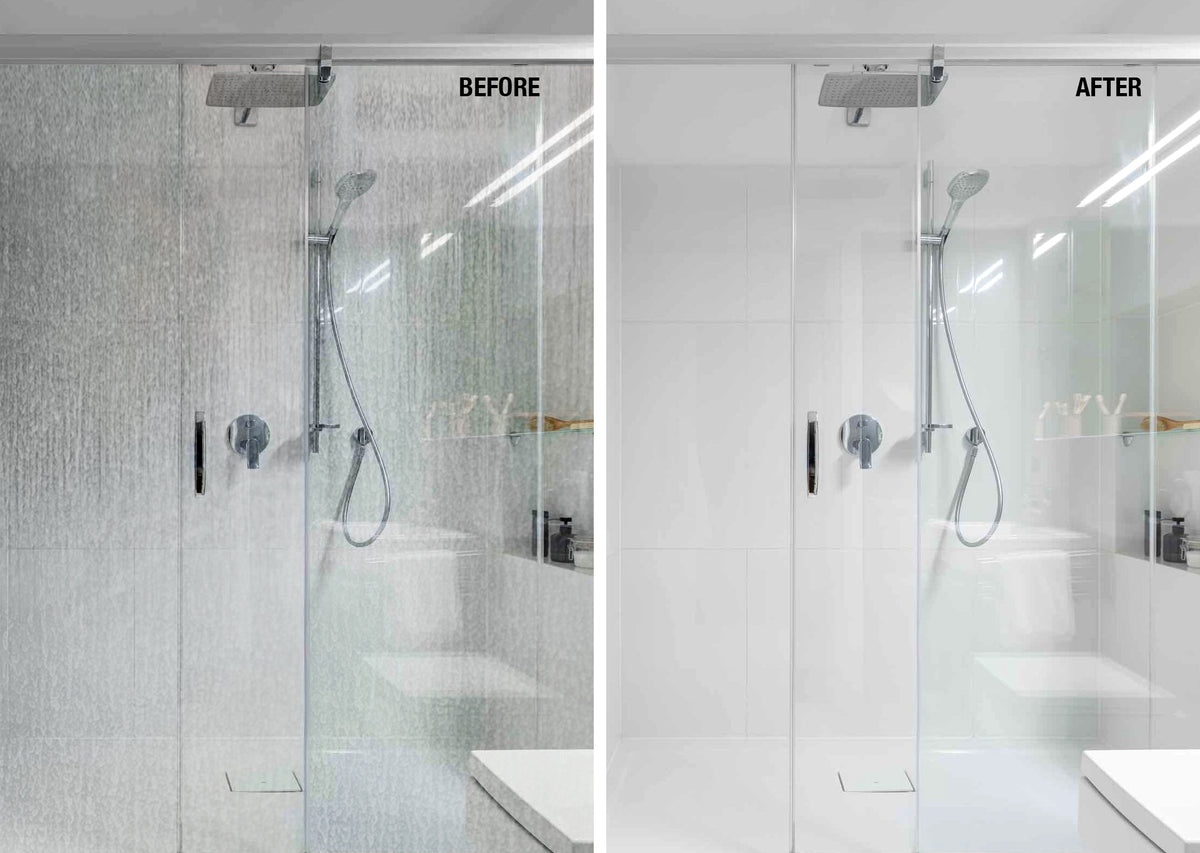Your Cart (0)
Free Shipping On Orders $69+
Your Cart Is Empty
Create a cleaner, glass surface with GLASSGUARD today!

There is no question about it, hard water stains are hard to remove (no pun intended). First let us explain what they are. Hard water is simply water that has a high mineral content. It is formed when water filters through deposits of limestone and chalk in the earth. The main minerals that make up hard water are calcium and magnesium carbonates, so when water evaporates, these minerals are left behind, forming a tough, cloudy residue on your glass.
Almost all water in your home will have trace amounts of these minerals. Even if your home is equipped with a water softener, that uses sodium to filter the water, you will still find a build up on your glass.
Now there are three crucial things you need to know when removing hard water stains.
Stains form over time so it only makes sense that they require time to be removed. If you are trying to remove a red wine stain from a white sheet, you need to soak it with a laundry stain remover for a few hours first. The same principle applies to hard water stains.
Hard water stains are caused by the minerals in water hardening on the glass. In order to remove these stains we need to soak them in a good acid to transform them back into a soft, soluble substance that we can remove.
First of all you will need to find a good acid. White vinegar or even lemon juice is acidic enough to dissolve hard water stains. The GLASSGUARD Glass Restoration Stain Remover also has a acid included in it that is specially designed to dissolve hard water stains. Once you have your acid of choice, all you need to do is apply it to the stain and give it time.
Now there is no way around it. Removing stains requires a bit of elbow grease. Once you have given the stain time to transform back to a soluble substance, you are still going to have to scrub quite hard, which brings us to the third and final step, abrasiveness.
Think of abrasiveness as sand paper. Each grade of sand paper has more grit and therefore is more abrasive. Sand paper scratches the surface on a very small or large scale depending on the level of grit or 'abrasiveness'.
Now the trick here is to find the appropriate abrasiveness for the surface that you will be removing the hard water stains from. Take glass for example, often people try to remove the stains using an ordinary cloth as they are afraid of scratching the surface, or they use a scourer pad that is far too abrasive and they do end up scratching the surface.
There are two steps that you need to get right here. First is the abrasiveness of the liquid or paste that you will be using and the second is the grade of scourer pad.
Scourer pads come in many different colours and each colour has it's own level of abrasiveness. You probably have a green scourer pad that you use on your dishes in the kitchen. For glass you would want to use the white scourer pad which is the least abrasive and therefore will not damage your glass.
We recommend our Magic Glass Restoration Nano Sponge, a magic sponge that is gentle on glass, providing a streak-free finish with minimal effort. For those who prefer using a drill for cleaning, our Drill Scourer Brush works with any drill and offers non-abrasive scrubbing, making it ideal for tackling tough stains. It comes with blue scourer pads for the toughest stains and white scourer pads for general cleaning, allowing you to clean five times faster.
For the paste or liquid, you want to use something like baking soda or cerium oxide, which will combine with the scourer pad to give you the maximum abrasiveness to remove the hard water stain. We also recommend our Glass Restoration Stain Remover, a powerful glass and window cleaner that removes stains and restores glass surfaces. It comes with a special scourer included for optimal cleaning results.